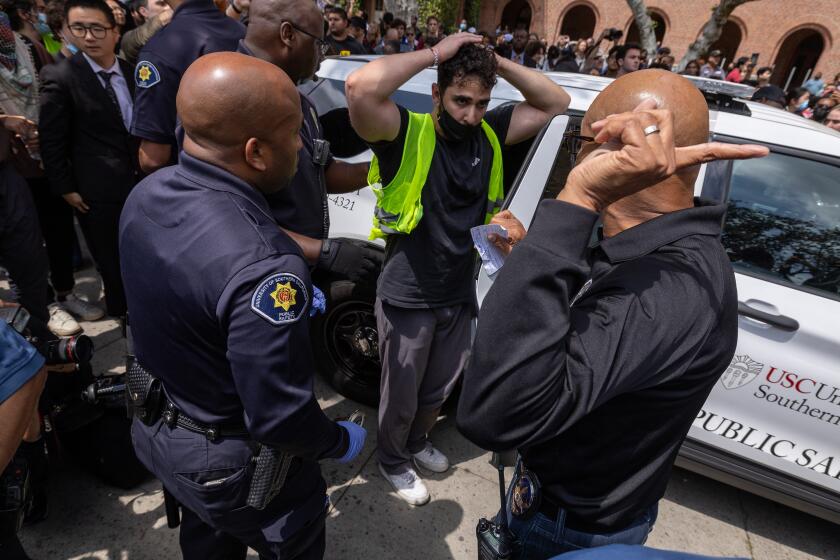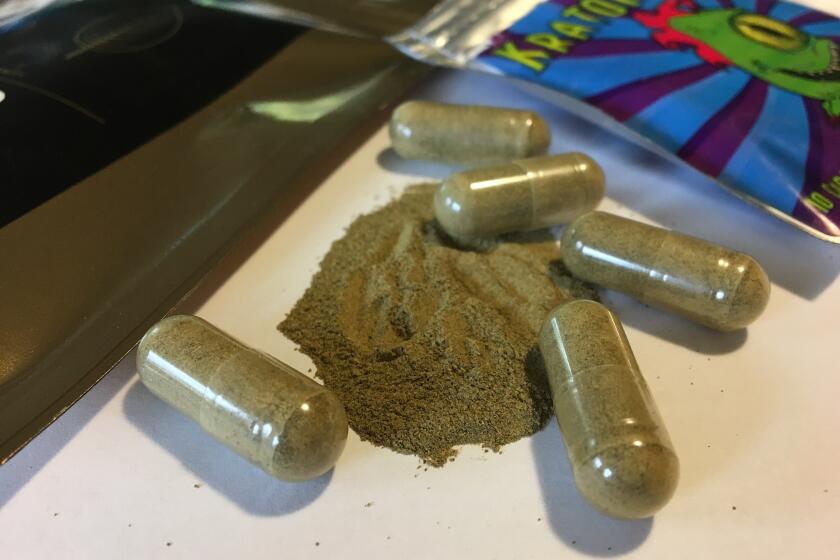Lawmaker Charges Philip Morris Tracked Children, Students as Potential Smokers
Secret research documents show Philip Morris tracked hyperactive third-graders as potential future smokers and gave electric shocks to college students to see if it would make them smoke more, a congressman charged Monday. One company report concluded smokers crave nicotine more than food, he said.
Rep. Henry Waxman (D-Los Angeles) unveiled stacks of documents from the world’s largest tobacco company on the House floor, contending they illustrated unethical and possibly illegal research into nicotine.
“Philip Morris has targeted children and college students, the youngest segments of the market, for special research projects,” said Waxman, who said he uncovered the documents during a congressional probe of tobacco.
“These documents make it crystal clear that we need regulation of tobacco to protect our children from becoming addicted to a life-threatening drug. . . . I hope they will dissuade members of this body [Congress] from any legislative effort to block that regulation,” Waxman said.
Waxman would not release copies of the documents--when he discovered industry records during a committee investigation last year, Brown & Williamson Tobacco Co. tried unsuccessfully to subpoena him to disclose his source. But Waxman is protected legally whenever he is on the House floor, so he submitted the documents for publication today in the official Congressional Record.
The Food and Drug Administration and the White House are discussing ways to curb childhood smoking, including banning cigarette vending machines and advertising attractive to children. Tobacco-state lawmakers are mobilizing to block such regulation, but did not immediately react to Waxman’s statements.
Philip Morris officials refused to discuss Waxman’s charges, saying they hadn’t seen the documents. But, “Philip Morris has always said that it studied why people smoke,” the company said in a statement. “Nicotine, which is an important component of the taste and flavor of cigarettes, is believed to be one of many reasons.”
Philip Morris Chief Executive William I. Campbell testified before Congress last year that tobacco is not addictive.
Waxman said his documents prove Philip Morris knew over a decade before the surgeon general did that nicotine is addictive. He read a 1969 company report for Philip Morris’ board of directors that concluded smokers need the “pharmacological effect” of tobacco. Company scientists wrote that the craving was so great, it “preempts food in times of scarcity on the smoker’s priority list.”
Waxman was more concerned about the research projects targeted to young people, saying some, particularly those involving shocking college students and injecting people with nicotine, appear unethical and possibly illegal.
According to documents Waxman cited:
* A study on hyperactive children as “prospective smokers” began tracking third-graders in Chesterfield County, Va., in 1974 to see if they later smoked as teen-agers as a way to calm down without prescription medication. Researchers wrote that they hoped ultimately to track 60,000 elementary school children, and in 1977 enlisted pediatricians who treated hyperactive children. Company scientists wrote that “it would be good to show that smoking is an advantage to at least one subgroup of the population,” Waxman read.
The study ended in 1978 when school officials declared access to students’ school and medical records violated their privacy, the company records said.
* A series of studies titled “Shock I-V” administered electric shocks to college students, beginning in 1969, to see if student smoking increased under stressful conditions. The study ended in 1972 because “fear of shock is scaring away some of our more valuable subjects,” researchers wrote.
* In 1974, Philip Morris executive Thomas Osdene wrote that stopping smoking produces “reactions not unlike those to be observed upon withdrawal of any number of habituating pharmacologic agents.”
* In 1977, the company wrote that it had reached an agreement with a university hospital to inject nicotine into people to measure their reactions, particularly brain waves. It was unclear whether those studies actually occurred.
* In 1976, college students were given low-nicotine cigarettes to see whether they smoked differently, by inhaling more deeply and holding the smoke longer, to compensate for the lack of nicotine.
More to Read
Get the L.A. Times Politics newsletter
Deeply reported insights into legislation, politics and policy from Sacramento, Washington and beyond. In your inbox three times per week.
You may occasionally receive promotional content from the Los Angeles Times.






